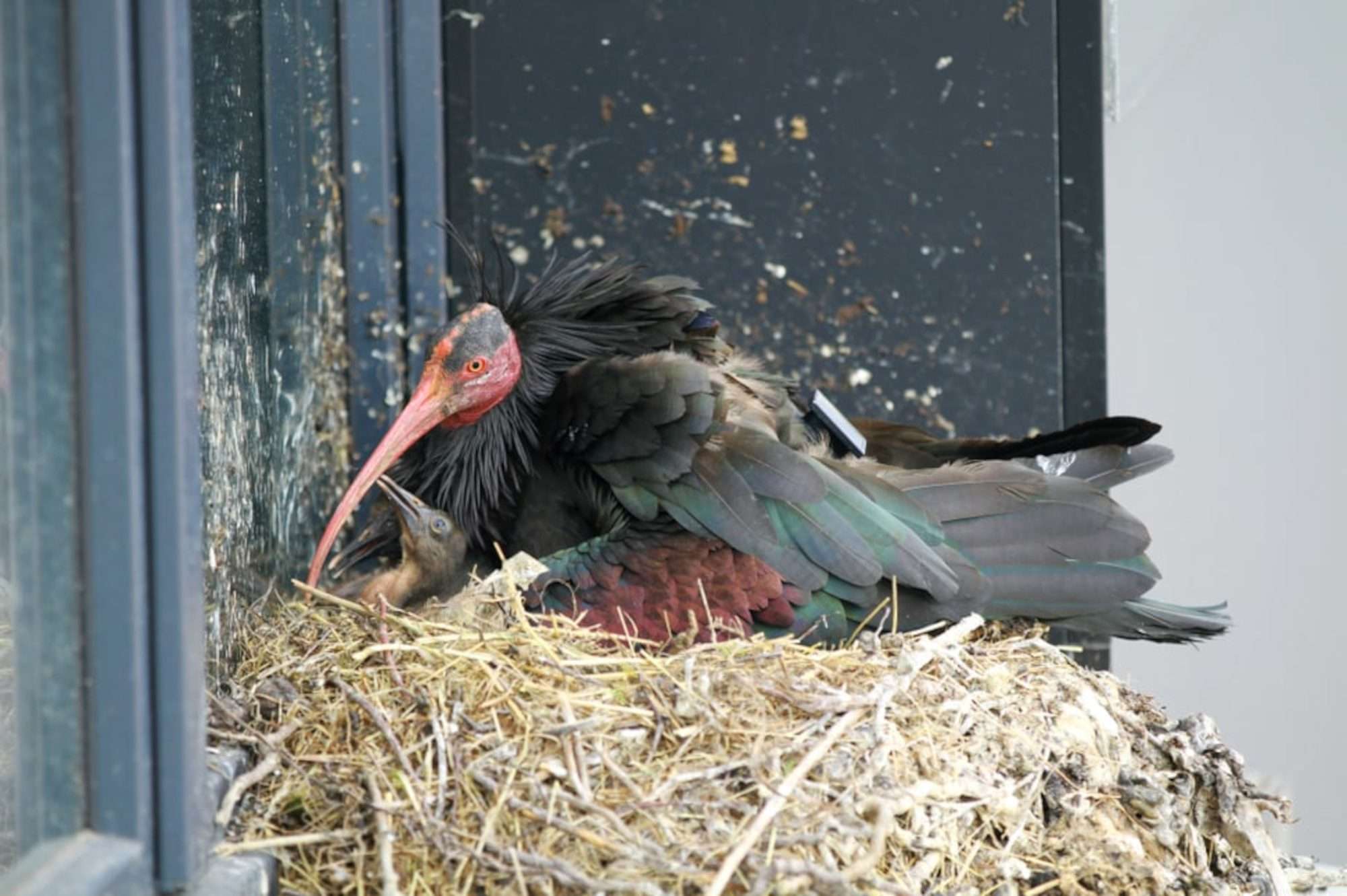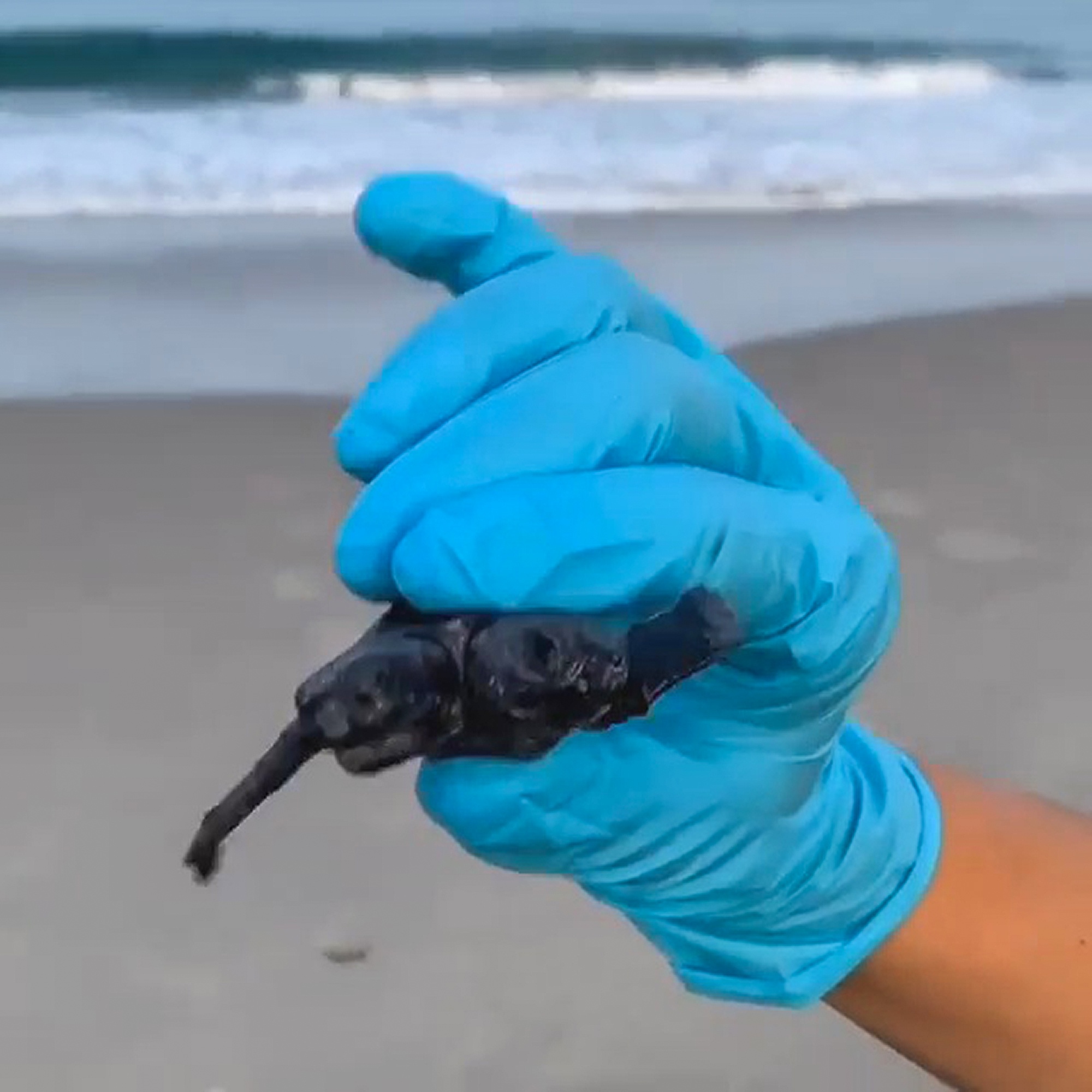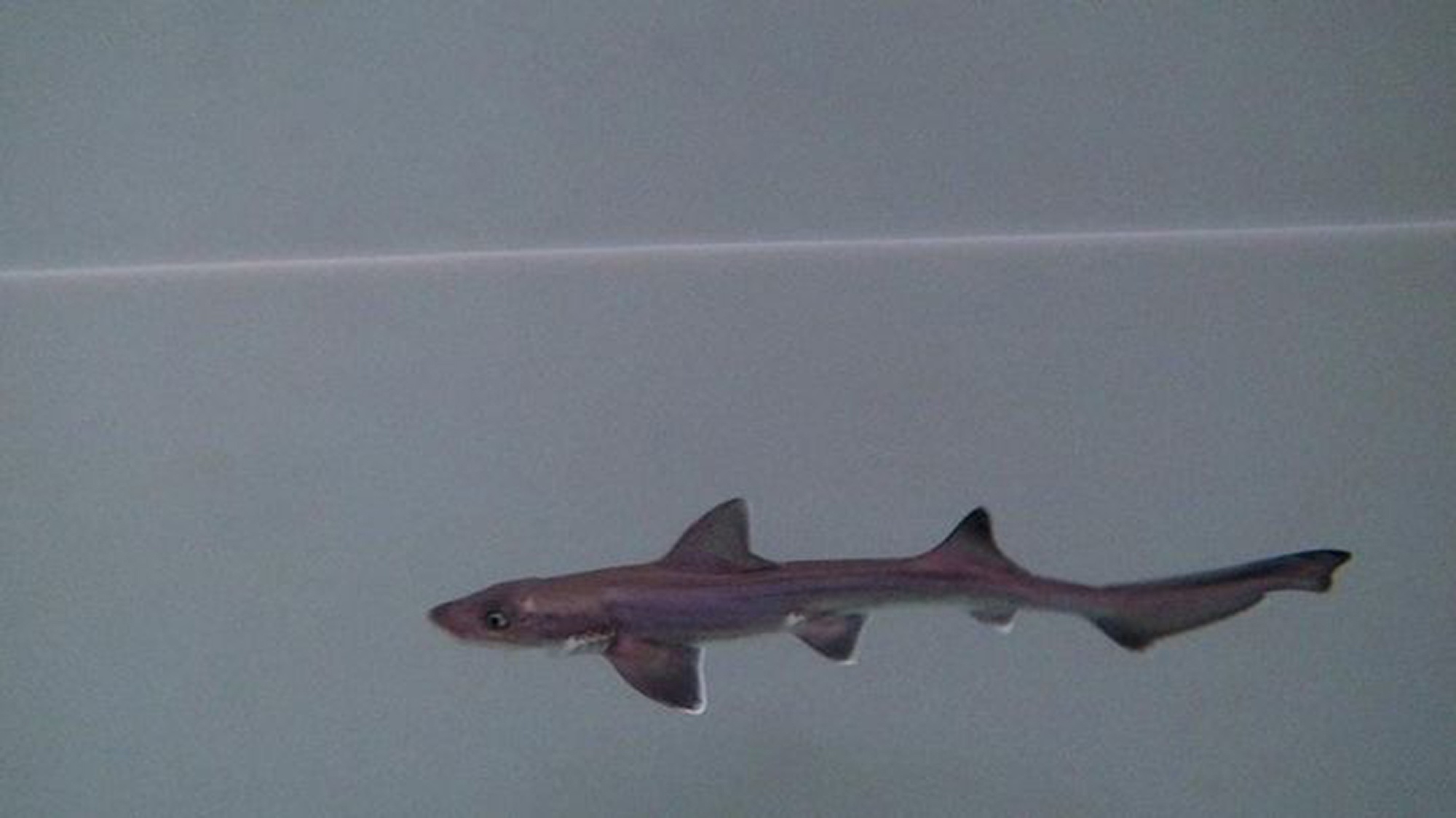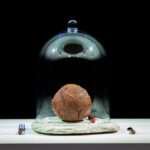This is the moment experts help an endangered loggerhead sea turtle lay her clutch of eggs as she comes home to nest on a Spanish beach.
The loggerhead sea turtle (Caretta caretta) – identified as vulnerable on the International Union for Conservation of Nature’s (IUCN) Red List of Threatened Species – had swum ashore on a beach in the port city and tourist hotspot of Denia in Alicante, on Spain’s Mediterranean coast.
She was spotted by a local who contacted experts from the Oceanografic Foundation in Valencia, who stepped in to help her.
A team of specialists took ultrasound readings and blood samples for their records.
Then they carefully retrieved 21 of the 111 eggs to be hatched in incubators to help improve the survival rate of the brood.
Footage shows the team carefully placing the eggs into a secure carrier surrounded by the sand they were buried in.
Then back at the lab, they transfer them gently to deep dishes of dampened sand before putting them in incubators for hatching.
Experts from the foundation explained: “Once the hatchlings are born, they will become part of the ‘Head-starting’ project, which aims to increase the survival of these animals during the first few months of life until they reach a size that enables them to avoid most predators when they return to the sea.”

Newsflash obtained a statement from Oceanografic Foundation dated 23rd June saying: “This is the third nesting recorded on the coast of the Valencian Community in a week.
“The total number of sea turtle eggs now stands at 253, including the nest in Gandia and the two in Denia.”
The experts said: “Once again, the beach of Denia has been chosen by a sea turtle for nesting.
“On this occasion, the turtle laid a total of 111 eggs, of which 21 are already in the incubators at the Oceanografic, and the rest are now on a protected beach in El Saler.
“Once again, the collaboration of the public has been essential in protecting the nest.
“A private individual alerted the 112 emergency hotline at around 10:15 pm last night upon spotting a turtle on the sand.”
The statement went on: “To ensure the well-being of the animal, veterinarians from the Oceanografic Foundation performed an ultrasound and a blood analysis.”

They said they then attached a satellite transmitter to the turtle, which will allow them to track its movements and “expand knowledge about the biology and routes of these animals”.
The foundation says they relocated the remaining eggs.
They explained: “The remaining 90 eggs have been deposited on a protected beach in the Albufera Natural Park to ensure their protection and prevent contact with passers-by and curious individuals.”
The loggerhead sea turtle is distributed worldwide, with significant nesting areas in the Atlantic and Indian Oceans, but the experts said that they primarily nest in the eastern part of the Mediterranean, in countries like Turkey, Cyprus, or Greece.
The primary threats to their existence are mainly human activities, with the turtles once intensively hunted for their meat and eggs.
Despite strong legislation decreasing their consumption, in some countries like Mexico, where regulations are not enforced strictly, they are still eaten as a delicacy.
In the ocean, fishing gear such as longlines and gillnets are the biggest threat to their survival, along with plastic.
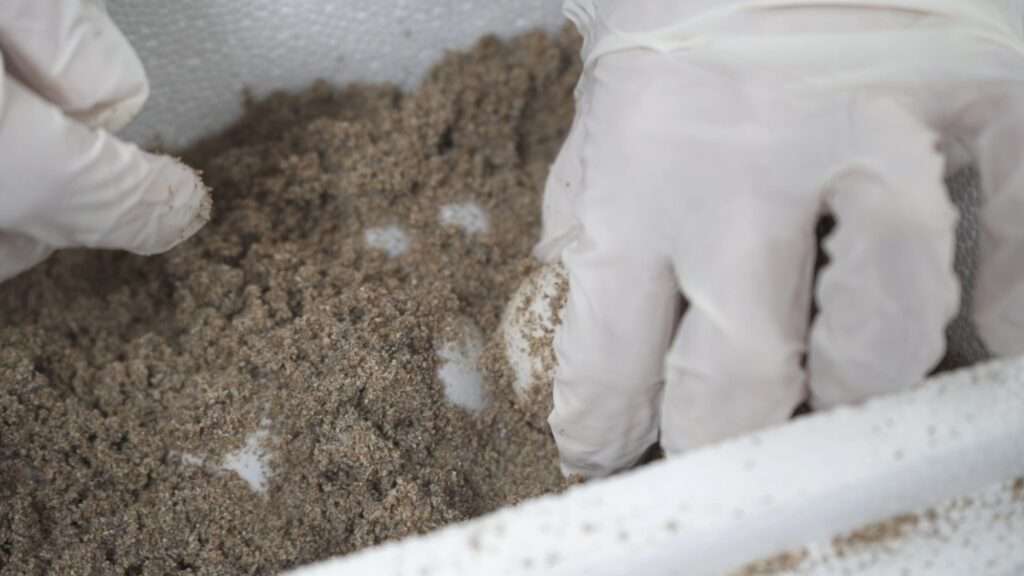
Light pollution on beaches that have been developed for tourism also discourages them from laying their eggs in the annual variations in temperatures can affect the sex ratios.
Unseasonably warm temperatures tend to increase the number of females, leading to concerns that they could go extinct if annual temperatures continue to rise dramatically.


